
Burgos: A Historic Jewel in Northern Spain
Explore Burgos, a historic gem in Northern Spain, known for its stunning Gothic Cathedral, vibrant cultural scene, and delectable local cuisine.
Burgos, a city steeped in history, lies in the heart of Spain's Castilla y León region. Known for its stunning Gothic architecture, this city is a must-visit for any history or architecture enthusiast. The crown jewel of Burgos is its majestic Cathedral, a UNESCO World Heritage site, which commands the skyline with its intricate spires and detailed façades. It's a testament to the city's rich past and a focal point for visitors. Walking through Burgos, you'll find a blend of medieval and modern. The old town is a labyrinth of narrow streets, each turning revealing a piece of the city's storied past. Key landmarks include the Arco de Santa María, a grand gateway that once served as the main entrance to the city, and the historic Monastery of Las Huelgas, offering a glimpse into the life of Spanish royalty and the Cistercian monks. But Burgos is not just about history. The city offers a vibrant cultural scene with numerous museums, theaters, and festivals. The Museum of Human Evolution is a standout, showcasing fascinating exhibits about our ancestors and their development. Burgos is also known for its culinary delights, particularly its famous morcilla (blood sausage) and hearty Castilian stews. The lively cafés and restaurants in the Plaza Mayor and along the riverside provide the perfect setting to savor these local flavors while enjoying the scenic views of the Arlanzón River.
Local tips in Burgos
- Visit the Cathedral early in the morning to avoid crowds and enjoy a peaceful experience.
- Wear comfortable shoes; the old town's cobblestone streets can be difficult to navigate in heels or sandals.
- Try the local morcilla at one of the traditional taverns for an authentic taste of Burgos.
- Explore the Museum of Human Evolution for an interactive and educational experience.
- Check the local calendar for festivals and events; Burgos hosts several throughout the year, including the famous Fiesta de San Pedro y San Pablo.
Burgos: A Historic Jewel in Northern Spain
Burgos, a city steeped in history, lies in the heart of Spain's Castilla y León region. Known for its stunning Gothic architecture, this city is a must-visit for any history or architecture enthusiast. The crown jewel of Burgos is its majestic Cathedral, a UNESCO World Heritage site, which commands the skyline with its intricate spires and detailed façades. It's a testament to the city's rich past and a focal point for visitors. Walking through Burgos, you'll find a blend of medieval and modern. The old town is a labyrinth of narrow streets, each turning revealing a piece of the city's storied past. Key landmarks include the Arco de Santa María, a grand gateway that once served as the main entrance to the city, and the historic Monastery of Las Huelgas, offering a glimpse into the life of Spanish royalty and the Cistercian monks. But Burgos is not just about history. The city offers a vibrant cultural scene with numerous museums, theaters, and festivals. The Museum of Human Evolution is a standout, showcasing fascinating exhibits about our ancestors and their development. Burgos is also known for its culinary delights, particularly its famous morcilla (blood sausage) and hearty Castilian stews. The lively cafés and restaurants in the Plaza Mayor and along the riverside provide the perfect setting to savor these local flavors while enjoying the scenic views of the Arlanzón River.
When is the best time to go to Burgos?
Iconic landmarks you can’t miss
Burgos Cathedral
Discover the stunning Burgos Cathedral, a UNESCO World Heritage site, showcasing Gothic architecture and rich history in the heart of Burgos, Spain.

Museum of Human Evolution
Explore the fascinating journey of human evolution at the Museum of Human Evolution in Burgos, Spain - a must-visit for history lovers and curious travelers.
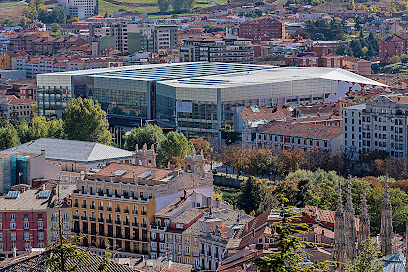
The Huelgas Monastery
Discover the serene beauty and rich history of the Huelgas Monastery in Burgos, a must-visit cultural gem in Spain.
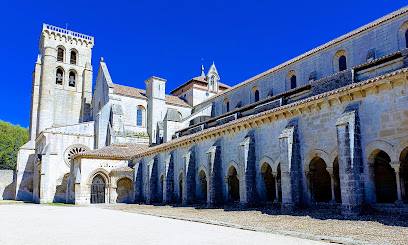
Cartuja de Miraflores - Burgos
Experience the serene beauty and rich history of Cartuja de Miraflores, a stunning monastery in the heart of Burgos.

Castillo de Burgos
Discover the historic Castillo de Burgos, a stunning castle with breathtaking views and rich history in the heart of Spain.

Mirador Del Castillo
Discover the stunning vistas of Burgos at Mirador Del Castillo, an essential viewpoint that combines breathtaking scenery with rich history.

Parque de La Isla
Experience the natural beauty and cultural richness of Parque de La Isla in Burgos, a perfect blend of relaxation and exploration in an urban oasis.

Arco de Santa María
Discover the Arco de Santa María, an iconic monument in Burgos, blending history and beauty in a vibrant cultural setting.

Casa del Cordón
Discover the architectural beauty and rich history of Casa del Cordón, a must-see landmark in Burgos, Spain, perfect for cultural enthusiasts.

Museo de Burgos
Discover the rich history and artistic heritage of Burgos at the captivating Museo de Burgos – a cultural gem in Spain.

St. Mary's Bridge
Explore the architectural beauty and historical significance of St. Mary's Bridge, a stunning landmark in Burgos, Spain, offering breathtaking views and cultural heritage.

Visitas Guiadas - Burgos Turismo
Explore Burgos, Spain’s historic gem, through engaging guided tours that reveal its stunning architecture and rich cultural heritage.
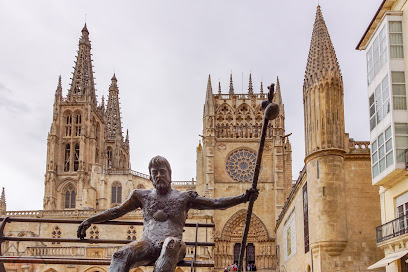
San Esteban, Burgos
Discover the architectural beauty and serene ambiance of San Esteban, a historic Catholic church and must-visit tourist attraction in Burgos.

San Nicolás de Bari, Burgos
Explore the stunning San Nicolás de Bari in Burgos, a breathtaking church filled with history, artistry, and a serene atmosphere perfect for reflection.
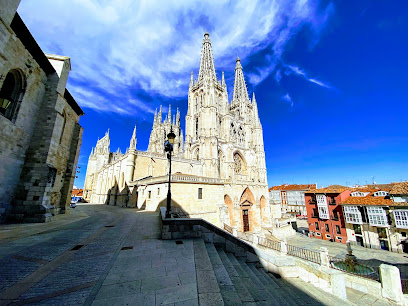
Freedom Square
Explore the vibrant atmosphere of Freedom Square in Burgos, where history, culture, and local life come together in a stunning setting.

Unmissable attractions to see
Burgos Cathedral
Discover the breathtaking beauty of Burgos Cathedral, a UNESCO World Heritage site, showcasing Gothic architecture and rich history in Burgos, Spain.

Museum of Human Evolution
Explore the rich history of humanity at the Museum of Human Evolution in Burgos, Spain, where fascinating exhibits reveal our origins and journey.
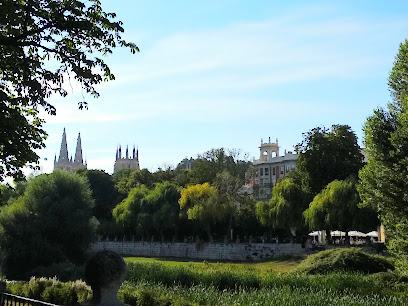
The Huelgas Monastery
Explore the Huelgas Monastery, a stunning blend of Gothic architecture and rich history in the heart of Burgos, Spain.

Monasterio de Santo Domingo de Silos
Experience the serene beauty and rich history of Monasterio de Santo Domingo de Silos, a remarkable monastery in Burgos, Spain, perfect for spiritual reflection.

Castillo de Burgos
Experience the majestic Castillo de Burgos, a historic fortress with stunning views and rich heritage, perfect for every traveler seeking adventure in Spain.

Mirador Del Castillo
Experience breathtaking panoramic views of Burgos at Mirador Del Castillo, where history and stunning landscapes come together.

Casa del Cordón
Discover the architectural beauty and rich history of Casa del Cordón, a stunning 15th-century palace in the heart of Burgos, Spain.

Museo de Burgos
Discover the captivating history and art of Burgos at the Museo de Burgos, where every exhibit tells a story of the region's rich cultural heritage.
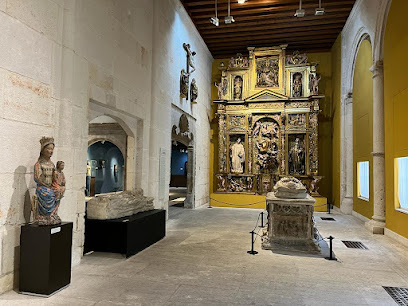
St. Mary's Bridge
Discover the architectural beauty and historical significance of St. Mary's Bridge in Burgos, Spain, a must-see for every traveler.
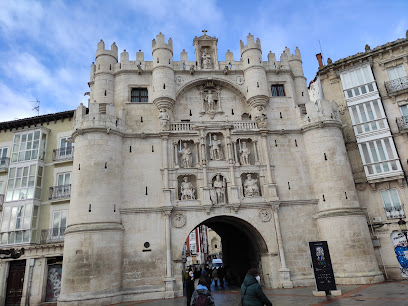
Saint John's Monastery
Discover the historic charm of Saint John's Monastery, a cultural gem in Burgos showcasing exquisite architecture and captivating art exhibitions.

San Esteban, Burgos
Discover the architectural beauty and spiritual significance of San Esteban, a historic Catholic church in Burgos that captivates every visitor.

Parque Lineal del Vena
Discover the tranquility of Parque Lineal del Vena in Burgos, a perfect blend of nature and urban charm for every traveler.

San Nicolás de Bari, Burgos
Explore the serene beauty and rich history of San Nicolás de Bari, a captivating Catholic church in the heart of Burgos, Spain.

Freedom Square
Experience the vibrant history and culture at Freedom Square, the iconic heart of Burgos, where past and present beautifully intertwine.

Museo Militar de Burgos
Discover the fascinating military history of Spain at the Museo Militar de Burgos, a must-visit for history lovers and curious travelers.

Essential places to dine
Casa Pancho
Experience authentic Spanish cuisine at Casa Pancho in Burgos – where tradition meets flavor in every bite.

Cervecería Morito
Experience authentic Spanish tapas at Cervecería Morito in Burgos – where great food meets vibrant atmosphere.

La Favorita Burgos
Discover La Favorita Burgos: A culinary gem serving grilled delights and gourmet takeout in the heart of Burgos.

Restaurante Mesón Los Herreros
Experience authentic Spanish cuisine at Restaurante Mesón Los Herreros in Burgos - where traditional flavors meet vibrant dining.

Restaurante Casa Ojeda
Experience exquisite Spanish cuisine at Restaurante Casa Ojeda in Burgos—where tradition meets flavor in every dish.

En Tiempos de Maricastaña
Discover authentic Burgos cuisine at En Tiempos de Maricastaña – a must-visit restaurant blending tradition with delightful flavors.

La Quinta del Monje
Experience authentic Spanish cuisine at La Quinta del Monje in Burgos - where grilling meets tapas in a vibrant setting.

La Boca del Lobo
Experience authentic Spanish cuisine at La Boca del Lobo in Burgos—where every dish tells a story and every bite delights.

Norte GastroBar
Discover the vibrant flavors of Burgos at Norte GastroBar - where exquisite grill meets traditional tapas in a cozy atmosphere.

Restaurante Gaona Jardín
Discover the culinary delights of Burgos at Restaurante Gaona Jardín, where authentic tapas and local flavors come together in a charming atmosphere.

La Caja
Discover La Caja: A delightful grill restaurant in Burgos serving mouthwatering dishes from breakfast to dinner.

La Fábrica Restaurante
Experience the best of Burgos cuisine at La Fábrica Restaurante—where tradition meets innovation in every dish.
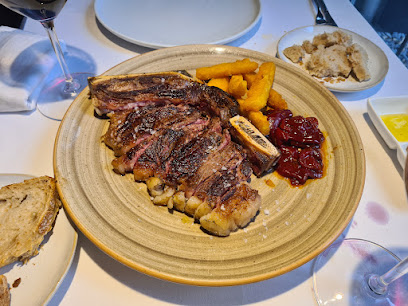
Carmen Restaurante
Experience the rich flavors of Mediterranean cuisine at Carmen Restaurante in Burgos - where every meal is a celebration!

Asador San Lorenzo
Experience authentic Spanish cuisine at Asador San Lorenzo in Burgos—home of exquisite grilled meats and warm hospitality.
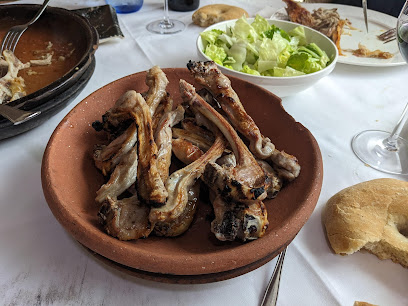
La Mafia se sienta a la mesa
Experience authentic Italian cuisine at La Mafia se sienta a la mesa in Burgos—where delicious food meets Mediterranean charm.

Markets, malls and hidden boutiques
Centro Comercial Camino de la Plata
Discover a shopping paradise at Centro Comercial Camino de la Plata in Burgos, where shopping, dining, and entertainment come together for an unforgettable experience.
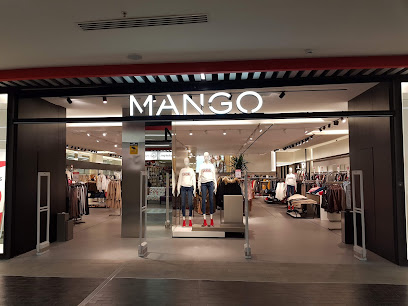
Charlotte Burgos
Explore Burgos with a cup of coffee in hand at Charlotte Burgos, where delightful brews and a cozy atmosphere await.

La Rúa
Experience the vibrant nightlife of Burgos at La Rúa, a unique concert hall and bar offering live music, cocktails, and a lively atmosphere.
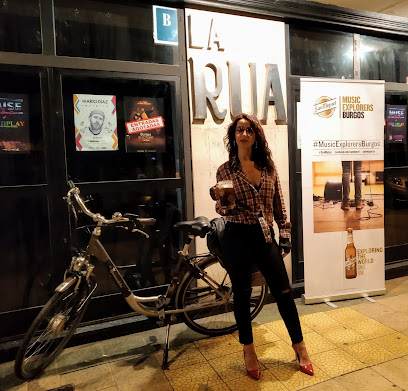
Casa Quintanilla
Explore local flavors at Casa Quintanilla, a delightful grocery store in Burgos, showcasing the region's culinary treasures and artisanal products.

Flying Tiger Copenhagen
Explore the whimsical world of Flying Tiger Copenhagen in Burgos – a vibrant gift shop filled with unique treasures for all ages.
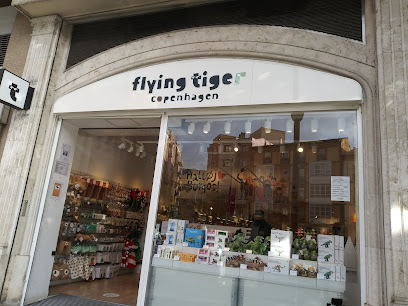
Librerías Hijos de Santiago Rodríguez, SA
Discover a treasure trove of books and stationery at Librerías Hijos de Santiago Rodríguez, SA in Burgos, a paradise for literature enthusiasts.

Bershka
Discover the latest fashion trends at Bershka in Burgos, where style meets affordability in a youthful and vibrant shopping experience.

GAME Camino Plata
Explore the ultimate gaming haven at GAME Camino Plata in Burgos, offering an extensive selection of video games, collectibles, and electronics.

Librería Luz Y Vida
Discover the charm of Librería Luz Y Vida, a welcoming bookstore in Burgos offering a diverse range of books and a cozy atmosphere for all bibliophiles.

ALE-HOP
Explore ALE-HOP in Burgos for unique gifts and souvenirs that capture the spirit of Spain, perfect for tourists and travelers alike.

SUMMIT mountain sports and nature
Discover the best outdoor gear at SUMMIT Mountain Sports and Nature in Burgos, your gateway to thrilling adventures and nature exploration.

Sakura té & bienestar
Experience the serene ambiance of Sakura té & bienestar in Burgos, where exquisite teas and wellness experiences await.

GranLenceria
Explore the charm of GranLenceria in Burgos, where exquisite lingerie meets personalized service for an unforgettable shopping experience.

Rarolarium Curiosity Shop
Explore Rarolarium Curiosity Shop in Burgos for unique gifts and local artisan treasures that capture the essence of Spanish culture.

Decimas
Explore Decimas in Burgos for the latest in sportswear, athletic apparel, and accessories, catering to every age and style preference.

Essential bars & hidden hideouts
San Patricio Old Tavern
Discover San Patricio Old Tavern in Burgos for an authentic Irish pub experience with traditional food, drinks, and lively entertainment.

La Cantina de Burgos
Experience authentic Burgos cuisine at La Cantina de Burgos, a lively bistro and bar perfect for enjoying local flavors and socializing.

La Tirolina
Discover Burgos nightlife at La Tirolina, a lively pub offering a great selection of drinks and a warm, welcoming atmosphere.

Jarra'n'Heavy - Burgos
Experience the vibrant nightlife of Burgos at Jarra'n'Heavy, where live music and affordable drinks create unforgettable nights out.

Bar La Babia
Experience the authentic flavors of Spanish tapas at Bar La Babia in Burgos, where great food and a warm atmosphere await.

La Pécora
Experience the vibrant nightlife of Burgos at La Pécora, where delicious drinks and a welcoming atmosphere await every visitor.

Bar Jabato
Discover the vibrant atmosphere of Bar Jabato, a top pub in Burgos where locals and tourists come together to enjoy delicious food and drinks.
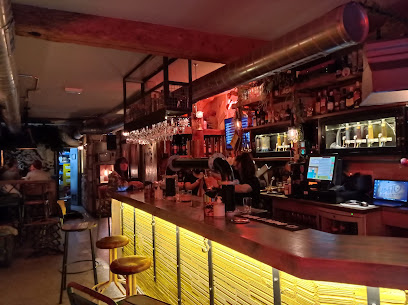
Siete Setenta 7,70 - Burgos
Discover the lively spirit of Burgos at Siete Setenta 7,70, a vibrant pub offering delightful drinks and a warm atmosphere for an unforgettable night.
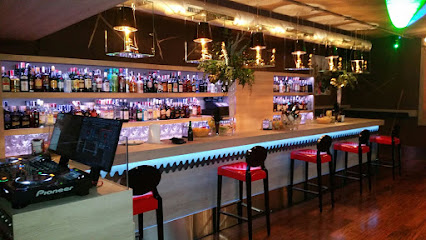
Bar San Francisco 7
Discover Bar San Francisco 7, a lively bar in Burgos offering a warm atmosphere, delicious tapas, and affordable prices for an authentic experience.

Bar FUXIÓN Tapas y Copas
Explore the vibrant flavors of Burgos at Bar FUXIÓN, where delightful tapas and refreshing drinks create an unforgettable dining experience.

RAM JAM CLUB
Discover RAM JAM CLUB: Burgos’ bustling bar offering a vibrant atmosphere, excellent drinks, and affordable prices for an unforgettable night out.

Pub Carpanta y Compañía Burgos
Experience Burgos' nightlife at Pub Carpanta y Compañía, where great drinks and a lively atmosphere await you.

Bar La Cuca - Burgos
Experience the authentic flavors of Burgos at Bar La Cuca, where local wines and vibrant atmosphere await you.

Suit Drink
Discover the lively atmosphere and delicious cocktails at Suit Drink, a must-visit pub in the heart of Burgos for an unforgettable night out.

Kava Bar
Experience the vibrant atmosphere and delightful drinks at Kava Bar, a must-visit pub in Burgos for every traveler.

Local Phrases
-
- HelloHola
[oh-lah] - GoodbyeAdiós
[ah-dee-ohs] - YesSí
[see] - NoNo
[noh] - Please/You're welcomePor favor/De nada
[por fah-bor/deh nah-dah] - Thank youGracias
[grah-thyahs] - Excuse me/SorryPerdón/Lo siento
[pehr-dohn/loh see-ehn-toh] - How are you?¿Cómo estás?
[koh-moh ehs-tahs] - Fine. And you?Bien. ¿Y tú?
[bee-ehn. ee too] - Do you speak English?¿Hablas inglés?
[ah-blahs een-glehs] - I don't understandNo entiendo
[noh ehn-tee-ehn-doh]
- HelloHola
-
- I'd like to see the menu, pleaseMe gustaría ver la carta, por favor
[meh goos-tah-ree-ah behr lah kahr-tah, por fah-bor] - I don't eat meatNo como carne
[noh koh-moh kahr-neh] - Cheers!¡Salud!
[sah-loohd] - I would like to pay, pleaseMe gustaría pagar, por favor
[meh goos-tah-ree-ah pah-gahr, por fah-bor]
- I'd like to see the menu, pleaseMe gustaría ver la carta, por favor
-
- Help!¡Ayuda!
[ah-yoo-dah] - Go away!¡Vete!
[veh-teh] - Call the Police!¡Llama a la policía!
[yah-mah ah lah poh-lee-see-ah] - Call a doctor!¡Llama a un médico!
[yah-mah ah oon meh-dee-koh] - I'm lostEstoy perdido
[ehs-toy pehr-dee-doh] - I'm illEstoy enfermo
[ehs-toy ehn-fehr-moh]
- Help!¡Ayuda!
-
- I'd like to buy...Me gustaría comprar...
[meh goos-tah-ree-ah kohm-prahr] - I'm just lookingSolo estoy mirando
[soh-loh ehs-toy meer-ahn-doh] - How much is it?¿Cuánto cuesta?
[kwan-toh kwehs-tah] - That's too expensiveEs demasiado caro
[ehs deh-mah-syah-doh kah-roh] - Can you lower the price?¿Puede bajar el precio?
[pweh-deh bah-hahr ehl pree-thyo]
- I'd like to buy...Me gustaría comprar...
-
- What time is it?¿Qué hora es?
[keh oh-rah ehs] - It's one o'clockEs la una
[ehs lah oo-nah] - Half past (10)Media (10)
[meh-dee-ah (deez)] - MorningMañana
[mah-nyah-nah] - AfternoonTarde
[tahr-deh] - EveningNoche
[noh-cheh] - YesterdayAyer
[ah-yehr] - TodayHoy
[oy] - TomorrowMañana
[mah-nyah-nah] - 1Uno
[oo-noh] - 2Dos
[dohs] - 3Tres
[trehs] - 4Cuatro
[kwah-troh] - 5Cinco
[theen-koh] - 6Seis
[says] - 7Siete
[syeh-teh] - 8Ocho
[oh-choh] - 9Nueve
[nweh-veh] - 10Diez
[dyehth]
- What time is it?¿Qué hora es?
-
- Where's a/the...?¿Dónde está...?
[dohn-deh ehs-tah] - What's the address?¿Cuál es la dirección?
[kwal ehs lah dee-rehk-syohn] - Can you show me (on the map)?¿Puedes enseñarme (en el mapa)?
[pweh-dehs ehn-seh-nyahr-meh (ehn ehl mah-pah)] - When's the next (bus)?¿Cuándo es el próximo (autobús)?
[kwan-doh ehs ehl proh-ksee-moh (ow-toh-boos)] - A ticket (to ....)Un billete (a ...)
[oon beel-yeh-teh (ah ...)]
- Where's a/the...?¿Dónde está...?
History of Burgos
-
Burgos was founded in 884 by Diego Rodríguez Porcelos, the Count of Castile, under orders from King Alfonso III of León. The city quickly became a strategic stronghold in the Christian Reconquista against the Moors.
-
Construction of the Cathedral of Burgos began in 1221, under the reign of Ferdinand III and the episcopate of Bishop Mauricio. This Gothic masterpiece, designated a UNESCO World Heritage site, took nearly 300 years to complete and stands as one of Spain's most iconic religious structures.
-
Rodrigo Díaz de Vivar, known as El Cid, was born near Burgos in 1043. He is a Spanish national hero and central figure in the Reconquista. The city of Burgos is closely tied to his legacy, with numerous statues and landmarks commemorating his exploits.
-
During the Spanish Civil War (1936-1939), Burgos served as the headquarters for General Francisco Franco and the Nationalist forces. The city became a central hub for Nationalist operations, and many key decisions were made within its borders.
-
Founded in 1187 by King Alfonso VIII and his wife, Queen Eleanor, this Cistercian monastery has played an essential role in Spain's religious and cultural history. It served as a royal pantheon and housed many significant religious artifacts.
-
Burgos is a crucial stop on the Camino de Santiago, the famous pilgrimage route to the shrine of the apostle Saint James the Great in Santiago de Compostela. Pilgrims from all over the world pass through Burgos, contributing to its rich cultural tapestry.
-
During the Peninsular War, Burgos was the site of a significant siege in 1812. British and Portuguese forces, led by the Duke of Wellington, attempted to capture the city from French control. Although ultimately unsuccessful, the siege was a notable event in the war against Napoleonic France.
-
Established in 1994, the University of Burgos has quickly become a center for higher education and research in Spain. The university continues the city's long tradition of scholarship and learning, contributing to its vibrant and dynamic cultural scene.
Burgos Essentials
-
Burgos is located in the northern part of Spain, within the autonomous community of Castile and León. The nearest major airport is Madrid-Barajas Adolfo Suárez Airport (MAD) in Madrid, approximately 250 kilometers away. From Madrid, you can take a direct train to Burgos, which takes around 2.5 hours. Buses also run regularly from Madrid to Burgos, with a journey time of approximately 3 hours. Additionally, Burgos has a small airport, Burgos Airport (RGS), which offers limited flights primarily serving domestic destinations.
-
Burgos is a walkable city with many of its attractions within close proximity. For longer distances, the city has an efficient public bus system operated by the company 'SAGO'. Taxis are also readily available and can be hailed on the street or booked via phone. For those wanting more flexibility, car rentals are available. Biking is another popular option, with several bike rental shops and dedicated bike lanes throughout the city.
-
The official currency in Burgos, as in the rest of Spain, is the Euro (EUR). Credit and debit cards are widely accepted in hotels, restaurants, and shops. ATMs are plentiful and can be found throughout the city. It is advisable to carry some cash for smaller establishments and markets, which may not accept cards.
-
Burgos is generally a safe city for tourists. However, like any urban area, it is essential to stay vigilant. Avoid poorly lit areas at night and be cautious of pickpockets in crowded places such as markets and tourist attractions. The neighborhoods of Gamonal and San Pedro de la Fuente have higher crime rates compared to other parts of the city, so exercise extra caution if visiting these areas.
-
In case of an emergency, dial 112 for immediate assistance. Burgos has several hospitals and medical facilities, including the Hospital Universitario de Burgos, which is well-equipped to handle emergencies. Pharmacies are also widespread and can provide over-the-counter medications. It is advisable to have travel insurance that covers medical emergencies.
-
Fashion: Do dress conservatively, especially when visiting religious sites. Avoid overly casual or revealing clothing. Religion: Do respect local religious customs and dress modestly in churches. Public Transport: Do validate your ticket before boarding. Don’t eat or drink on public transport. Greetings: Do greet people with a friendly 'Hola' and a handshake. A kiss on both cheeks is also common among friends and family. Eating & Drinking: Do try local specialties such as 'morcilla de Burgos' and 'cordero lechal'. Don’t leave a tip on the table; instead, hand it directly to the waiter.
-
To experience Burgos like a local, visit the Mercado Sur to buy fresh produce and local delicacies. Take a leisurely stroll along the Paseo del Espolón, a popular promenade among locals. Don't miss the chance to explore the lesser-known but beautiful Cartuja de Miraflores monastery. Engage with locals at tapas bars to get a genuine feel of the city's vibrant social life.
Trending Landmark in Burgos
-
Burgos Cathedral
-
Museum of Human Evolution
-
The Huelgas Monastery
-
Cartuja de Miraflores - Burgos
-
Castillo de Burgos
-
Mirador Del Castillo
-
Parque de La Isla
-
Arco de Santa María
-
Casa del Cordón
-
Museo de Burgos
-
St. Mary's Bridge
-
Visitas Guiadas - Burgos Turismo
-
San Esteban, Burgos
-
San Nicolás de Bari, Burgos
-
Freedom Square
Nearby Cities to Burgos
-
Things To Do in Valladolid
-
Things To Do in Bilbao
-
Things To Do in Santander
-
Things To Do in Segovia
-
Things To Do in Pamplona
-
Things To Do in San Sebastián
-
Things To Do in Avila
-
Things To Do in Oviedo
-
Things To Do in Madrid
-
Things To Do in Salamanca
-
Things To Do in Zaragoza
-
Things To Do in Bragança
-
Things To Do in Huesca
-
Things To Do in Toledo
-
Things To Do in Lourdes













